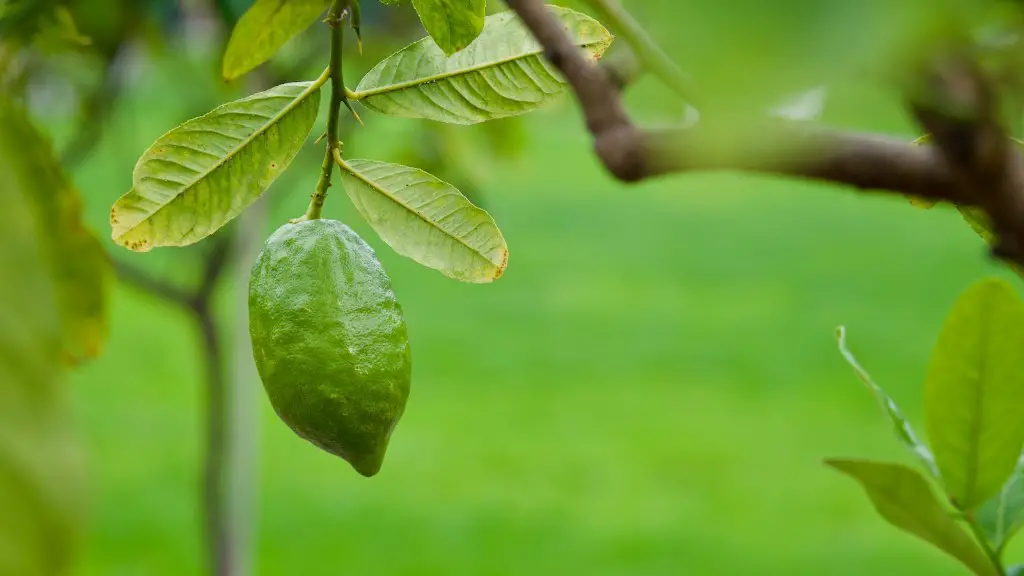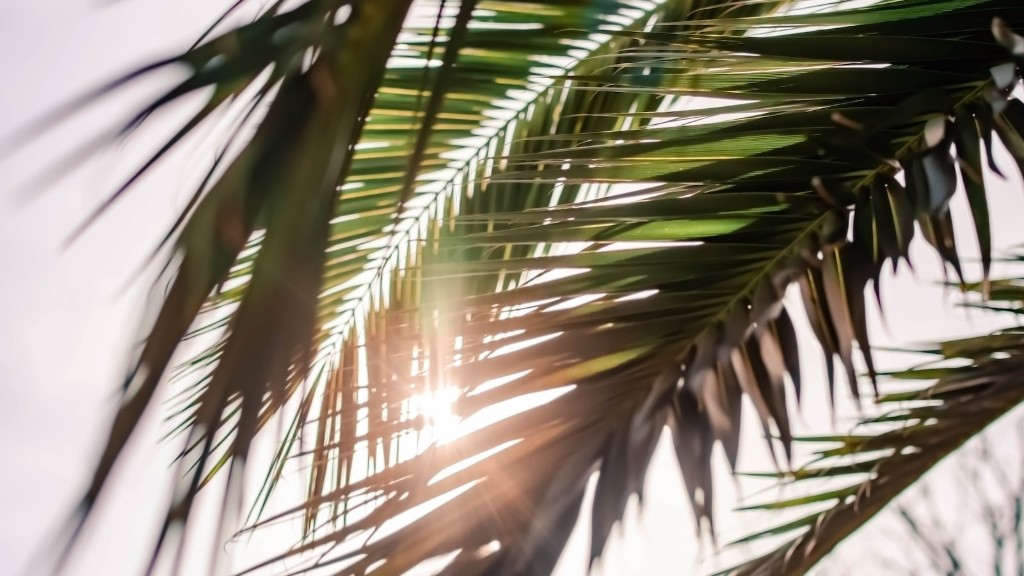Meyer lemon trees are one of the best citrus fruits you can grow in a container. They produce sweet, juicy lemons, and are low maintenance. This guide is here to help you get started growing your own Meyer lemon tree in a container.
Firstly, select a high-quality growing container and use well-draining soil. It’s best to select an earthenware pot with good drainage and a capacity of at least 8 gallons. Once you have both, you’ll want to prepare the soil with a light amendment of compost before adding your Meyer lemon tree.
Next, the most important step in the process is to optimize the growing conditions. Meyer lemon trees like lots of sunlight, and temperatures between 65-85°F. You will also want to provide constant watering, so it’s a good idea to install a drip system with a timer.
You also need to fertilize your Meyer lemon tree at least three times a year. Fertilize with a balanced, citrus-specific fertilizer that’s been diluted for container-grown trees. Additionally, make sure to mulch the container with at least an inch of organic matter to keep the soil moist and help maintain the pH level.
Finally, prune and water during the growing season to ensure the health of your Meyer lemon tree. Prune the tree to keep it compact and remove any dead, crossed, or damaged branches. Do not prune more than one-third of the tree’s foliage. Water your lemon tree deeply, but try not to let the soil become soggy. Additionally, you can use a fan to circulate air around the tree.
Planting
When it comes to planting a Meyer lemon tree, you must pay attention to the proper placement of the sapling. For optimal growth, plant your Meyer lemon tree in full sun to partial shade, in an area that receives at least six hours of direct sunlight daily. Choose an area that is sheltered from strong winds, and has a soil pH of 6.0-7.0.
When planting, you’ll want to soak the container in water for a few minutes before planting. Remove the Meyer lemon tree from its container, loosen the soil around it, and place in the prepared spot. Fill in the surrounding soil, patting gently to ensure a secure planting. Water at least once a day for the first two weeks, then three times a week during its first year.
Be sure the Meyer lemon tree has proper drainage to filter out excess water. If planting in a pot, you should use a soil-based medium with excellent drainage capabilities, such as equal parts loam and peat. Additionally, place a few stones at the bottom of the pot to promote drainage.
Care and Maintenance
Maintaining a Meyer lemon tree is fairly simple. The most important part is to keep it hydrated. During the growing season, water your tree at least twice a week, but make sure the soil drains out excess water. During the winter, water less frequently, but don’t let the soil dry out. Supplement with a quarterly application of a fertilizer with a balanced macro-nutrient formulation.
Protect your tree from potential pests and diseases by regularly inspecting for yellow leaves, spotting, and wilting. Prune the tree in late spring to early summer as needed, removing excess growth and crossing branches. Also, prune the root ball twice a year to keep the tree in a healthy and manageable size.
Lastly, Meyer lemon trees grown in containers can become root bound after a few years. When this happens, repot your tree in a larger container, using the same soil mix for best results. Or if you wish, move your Meyer lemon tree to a warm, well-drained, sheltered spot in your garden.
Preventive Measures
Taking preventive measures is important to keep your Meyer lemon tree healthy. During cold winter nights, place your container indoors to protect the tree from frost and freezing temperatures. Additionally, you can purchase a row cover from your local garden center that can be draped over the tree for extra protection.
Certain pests, such as aphids, can also be a problem for Meyer lemon trees. In order to prevent a pest problem, inspect your tree and its container regularly. If you see signs of insects, treat the plant with a pesticide specifically designed for citrus trees. Additionally, you can use neem oil to deter harmful bugs and keep the tree healthy.
Meyer lemon trees are susceptible to certain viruses, such as citrus mosaic, citrus tristeza, and citrus variegation. The most effective way to protect your Meyer lemon tree is to buy healthy, certified virus-free stock. A certified tree has been inspected and tested by a professional, giving you peace of mind that your tree will produce healthy, high-quality fruit.
Harvesting
Once your Meyer lemon tree has established itself and is producing, you’ll be able to harvest the fruit. Meyer lemons turn from green to yellow when ripe, and the best way to tell when they are ready is to look for lemons that are slightly soft to the touch. Alternatively, you can assess for flavor by tasting the lemon yourself.
Once you’ve picked the lemons, you can store them at room temperature for up to a week or in the refrigerator for up to a month. When storing in a fridge, be sure to place them in a breathable bag in order to prevent moisture build-up. Meyer lemons can then be used in a variety of recipes, or simply eaten as is.
Troubleshooting
During the first year of growth, you may encounter various issues with your Meyer lemon tree. The most common issue is excessive leaf yellowing and wilting. This could be caused by pest infestations, dry soil, or a lack of fertilization. If you notice this issue, first check to see if the soil is dry, and thoroughly inspect leaves and stems for signs of pests.
To treat a pest infestation, you can use insecticidal soap or neem oil. If the soil is dry, it’s likely time for a deep watering. Additionally, if the tree isn’t getting enough nutrients, you can apply a mild fertilizer solution if the soil’s pH is below 7.0. If needed, increase the light intensity, as Meyer lemon trees require at least 6-8 hours of direct sunlight per day.
In extreme cases, you may notice that your Meyer lemon tree is displaying signs of distress. If this is the case, it’s possible that the tree is suffering from a nutrient deficiency, or a lack of water. Treating a nutrient deficiency can be done by fertilizing with a citrus-specific fertilizer, while a lack of water should be addressed with regular deep irrigation when needed.
To prevent long-term damage to your Meyer lemon tree, be sure to inspect it regularly and address any possible issues immediately. Taking the time to properly care for your Meyer lemon tree, and understanding how to troubleshoot any issues, will go a long way in ensuring a healthy, vibrant tree.




